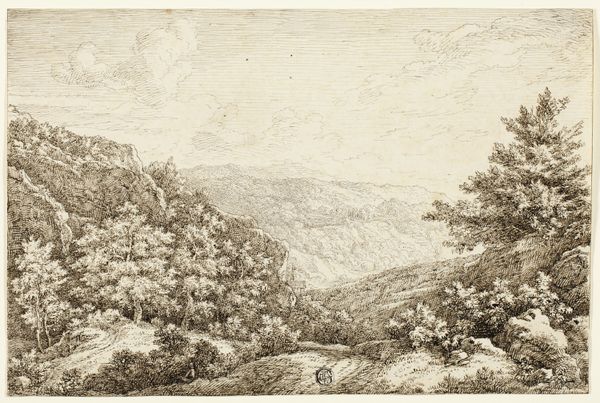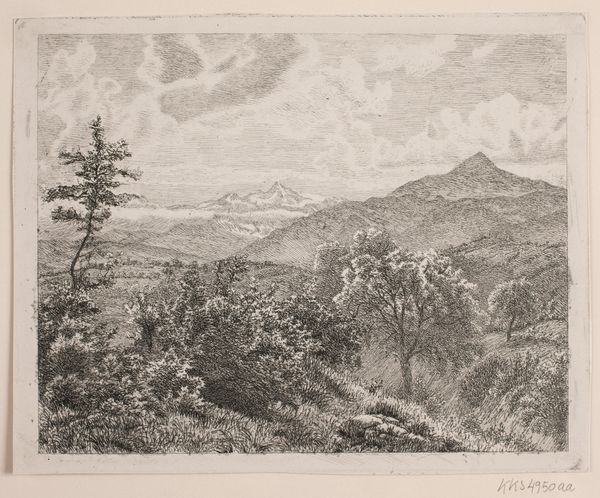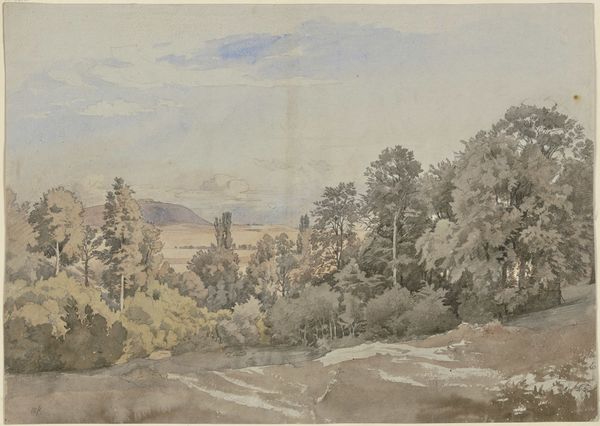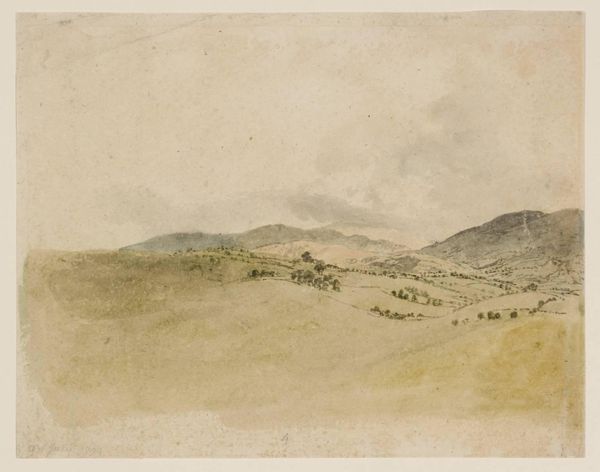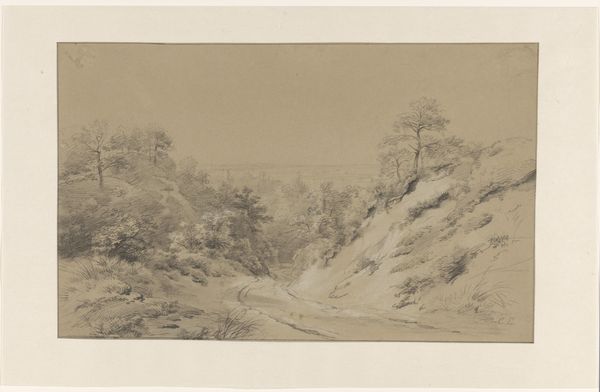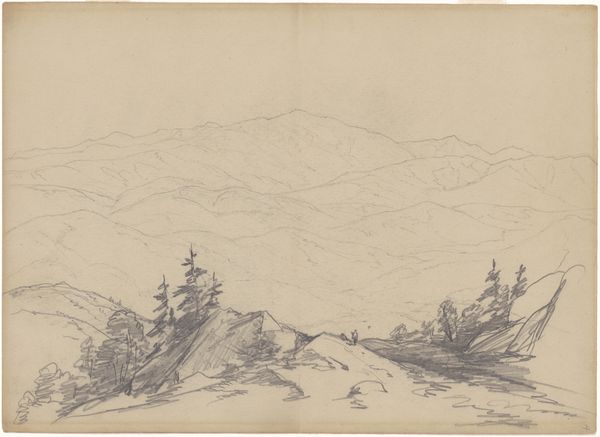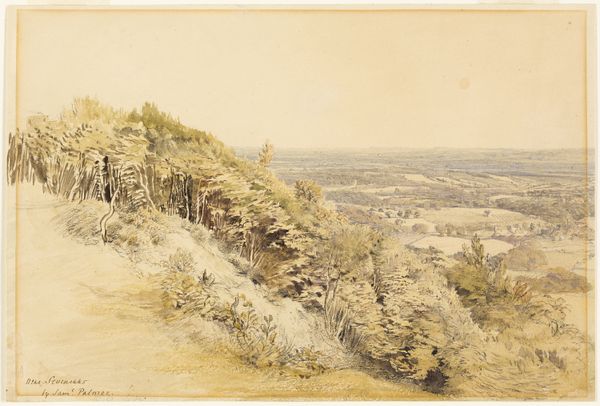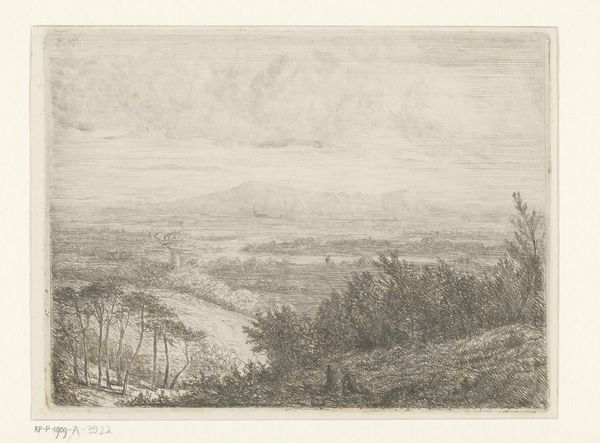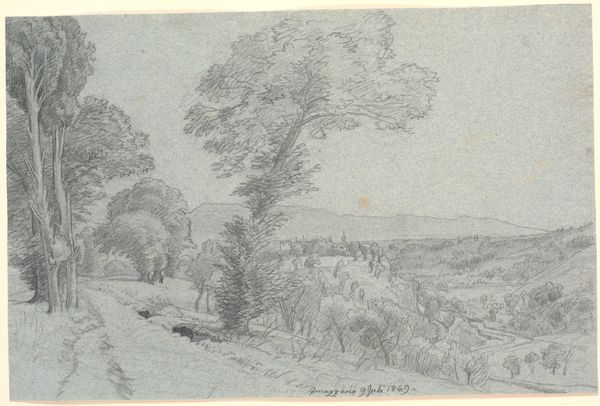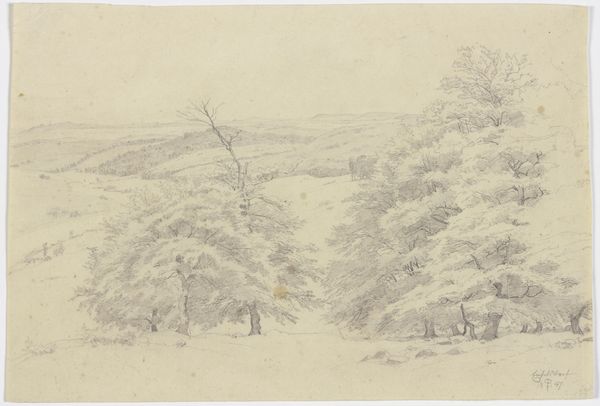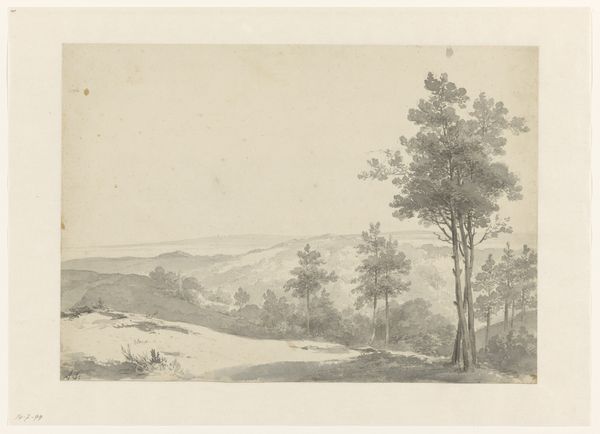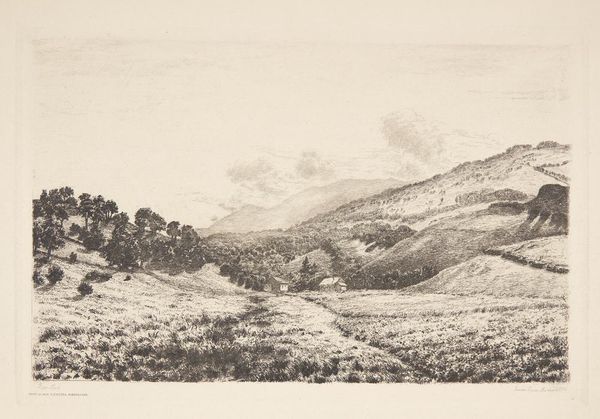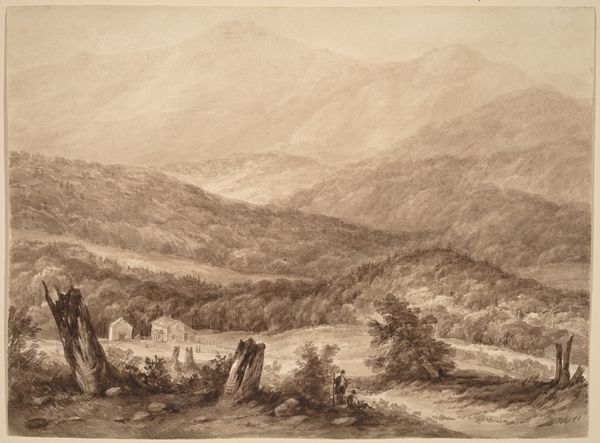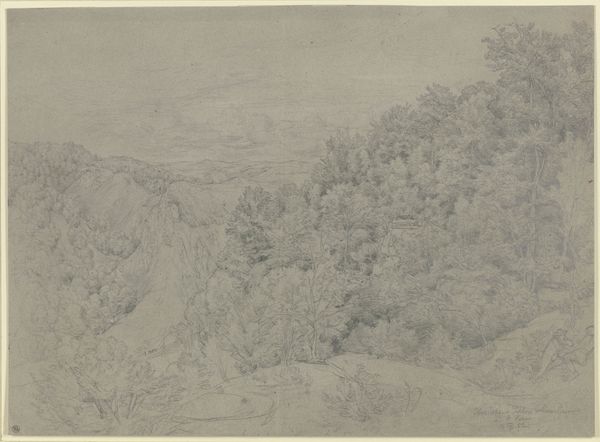
drawing, plein-air, pencil
#
drawing
#
plein-air
#
pencil sketch
#
landscape
#
charcoal drawing
#
pencil drawing
#
romanticism
#
pencil
#
watercolour illustration
#
watercolor
Dimensions: height 216 mm, width 310 mm
Copyright: Rijks Museum: Open Domain
Curator: Immediately, I am struck by its muted palette, it feels somber, a very quiet depiction of a landscape. Editor: Indeed. This is a drawing by Cornelis Steffelaar, titled “Berglandschap met dennen op de voorgrond”, which translates to “Mountain landscape with pines in the foreground”. It’s believed to have been made sometime between 1807 and 1861. He worked primarily with pencil and watercolor, often en plein air. Curator: Ah, en plein air, that context makes it easier to place, not just stylistically, but socially. There's a focus on authenticity, nature observed directly, reflecting perhaps a societal turn toward valuing direct experience. Did class and access impact who could engage in these practices at the time? Editor: Absolutely. Consider the democratization of art materials that was slowly occurring. While wealthy patrons had always commissioned landscapes, the rise of a middle class meant more people could access drawing supplies, fueling a market for scenes just like this. This connects directly to the increasing accessibility of nature through evolving infrastructure and early tourism. Curator: It almost romanticizes the solitary individual encountering sublime nature, a very gendered figure, almost always coded male, right? Reflecting both the active artist, taking ownership through representation, and also often erasing indigenous or local communities who had different relationships with this same landscape. Editor: It is, indeed, a carefully curated view, and we need to read beyond the romantic surface. There's the obvious influence of the period's aesthetic trends – but also we should note that works like these help create a visual record contributing to notions of national identity and ownership. Consider, too, who these images were intended for. Were they sold as artworks, studies, records? The image and function work in tandem to enforce ideologies. Curator: This resonates, in that way, Steffelaar's subtle hand contributed to constructing a specific narrative about land, experience and ownership—a narrative which arguably still has social power and consequences. Editor: Exactly, reflecting on Steffelaar’s work makes us see beyond simple landscapes, offering us views into societal currents, that is how images like this influence us today.
Comments
No comments
Be the first to comment and join the conversation on the ultimate creative platform.
